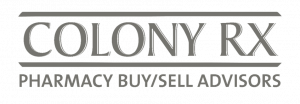Minimizing Buyers’ Risk to Get Top Dollar for your Pharmacy.
Minimizing buyers’ risk not only aids the salability of your business, tackling the issues improves the prospects and profitability of your business. Your reward is putting more money in your pocket during your period of ownership. That’s why it is never too early to start!
All Buyers are concerned about risk
As buyers look at your business, they often think more of the risks than the opportunities. They begin to analyze the business by looking at the downsides – the obstacles and pitfalls to their potential success. If the risks discovered in due diligence are too high, even an agreed-to deal can quickly fall apart.
Sellers’ discretionary earnings (SDE) below $100,000 is a major obstacle
Normally we hate SDE as a metric, and think it is totally invalid, but it makes sense here because many times pharmacist purchases who run a store are buying themselves a job.
One of the first risk factors considered by buyers is “Can I rely on this business to continue to support the lifestyle to which I’ve become accustomed?” With many potential buyers coming from the corporate pharmacy world, they are concerned with income replacement (and they want to be rewarded for entrepreneurial risk). When buyers inquire about businesses for sale and are questioned by business brokers about their goals, almost all will respond “they want (or need) six-figure income.” $100,000 is the lowest number meeting that objective. Coincidentally, that is also about the minimum level of SDE most lenders require to consider SBA financing (because lenders are usually not interested in transactions below $250,000, which requires about $100,000 in SDE).
If a business has less than $100,000 in SDE, the pool of potential buyers shrinks considerably because most cannot afford to live on take-home pay of $50,000 – $75,000 (after debt-service on the acquisition and reinvestment in the business). Thre are some pharmacy consolidators who may still be interested in the business.
In addition, below that $100,000 SDE threshold, SBA financing is considerably more difficult to obtain. In this case, the buyer’s risk of inadequate income to maintain their lifestyle parallels your risk of not being able to sell the business. To help assure salability, it is extremely important to improve the business to generate a minimum of $100,000 in SDE.
Wildly fluctuating profit is a major risk for buyers
Buyers are also interested in reliable SDE. If the SDE fluctuates wildly from year to year, the buyer’s risk is very high if the price is based on the higher earnings level. In reality, when SDE shows considerable fluctuation, buyers’ offers will only be based on the lower SDE. Lenders take the same approach. The only way sellers obtain more is through earn-out negotiations which results in future funds being earned by the seller after closing based on the actual results produced by the buyer’s operation. It’s hard to control SDE in
Customer concentration issues
Customer concentration is a very significant risk for buyers. Most pharamcies have their business spread out over many patients, so concentration comes from doctors, health clinics, or homes (LTC, group homes, etc.) If you have a single one of these that represents 10% or more of your business, it may be an issue to buyers or lenders. As the percentage of concentration increases, so does the risk for buyers and lenders. Your risk of failing to sell your business also increases. Diversifying your customer base will aid significantly in salability and increase the perception of value. Read this article for more information:
Inadequate financial information
From a buyer standpoint, it’s an expensive proposition to fight through financial statements that are incomplete, inconsistent, erroneous or meaningless. Almost all prospective buyers and their advisors will walk away from a business they can’t get a handle on because of inadequate financial statements and supporting documents. However, even if your financials are a mess, Colony can help recreate these for you pretty easily because pharmacy has limited inputs and outputs compared to many other industries.
Uninformed sellers
You can also help minimize buyers’ risk by obtaining knowledge of the business sale process. In particular, it’s important to identify obstacles to a successful sale and address as many as possible, and disclose any negative issues that you are unable to solve. Process-wise, it is also important to understand the need for confidentiality, the need to sign a non-compete agreement and the need for owners to cooperate in a post-transition (or training) period, all of which help mitigate the buyer’s risk assessment. When these types of negatives arise in due diligence, transactions are usually doomed to failure.
Seller Financing
And finally, in most instances, sellers must be prepared to provide some seller financing. Buyers perceive a willingness to do so as your belief in the business, which aids in assessing their business acquisition risk. The reality is, SBA lenders will usually require minor participation from sellers, so you might as well accept the facts and seem to do so willingly.



